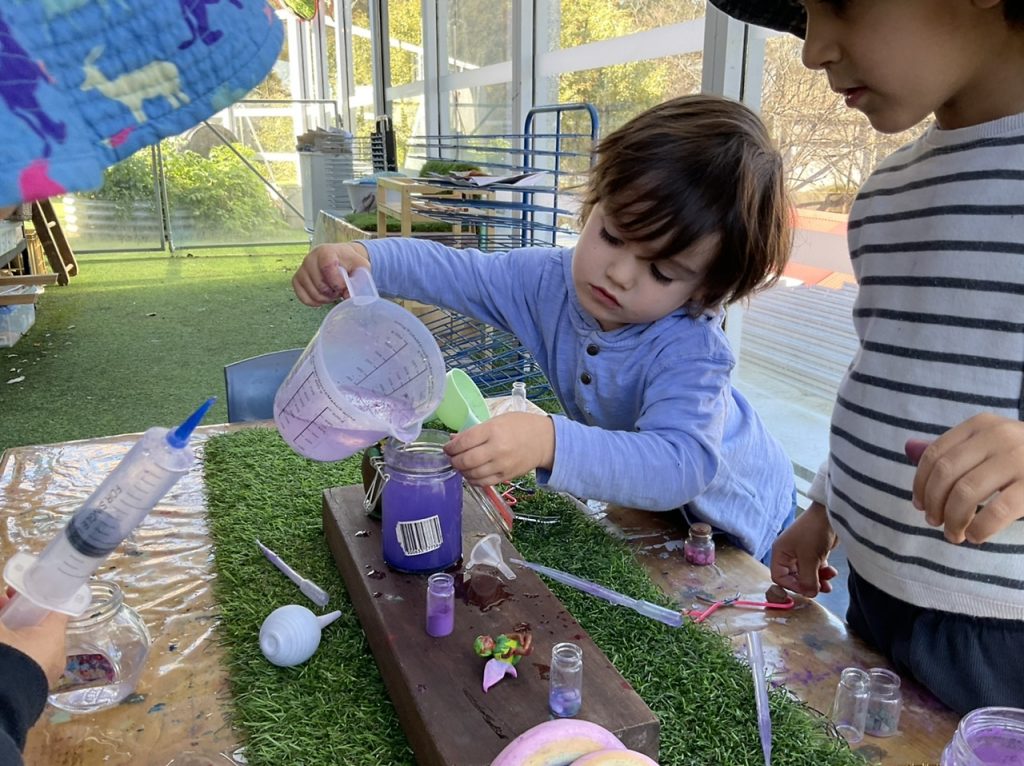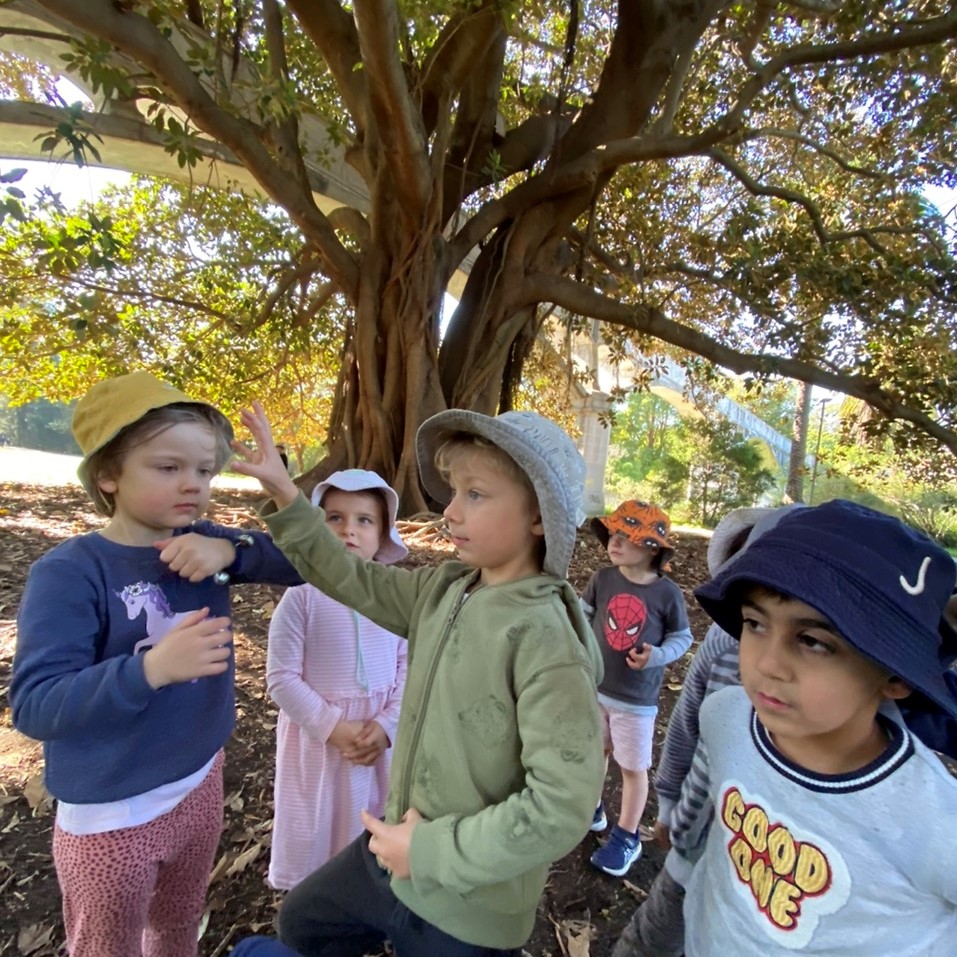
An interest in immersing ourselves in an imaginary magical world was sparked early last year as the children were exploring sounds and listening to instrumental compositions. One particular soundscape that featured twinkling chimes and suspenseful highs and lows became the ‘fairy music’ and was a prompt to drive imaginary dramatic play.
Without any physical resources, the children as a group created their own fantastical imaginary world. We explored dark swamps in rickety boats, avoiding crocodiles and keeping an ear out for those dangerous wolves and yetis. Luckily, our world was also inhabited by fairies who often helped us get out of sticky situations by gifting or using their magic.


As the world expanded and more children joined in the fun, the play naturally developed some unspoken rules, roles and a predictive narrative. While boys and girls were equally interested and actively participating, I noticed that the roles were seemingly gendered. Some children took a more passive role alongside myself, however, the ‘fairies’ were only played by girls, and the ‘wolves’ only played by boys. I wanted to challenge this idea as I feared this too would become an unspoken ‘rule’ of the game.
As expected, one afternoon for the first time in this play, I heard: “Boys can’t be fairies, they have to be wolves.” Before I could interject, a strong voice made herself heard, and challenged this thought: “Boys can be fairies, there are boy and girl fairies.” Nothing more was said and the play continued, but from this point on, the topic seemed to pop up time and time again.
“Children should not be limited by having to choose to be ‘masculine’ and therefore, ‘not feminine’ and vice versa…. If Educators can learn how gender binaries are ‘maintained and policed’ in classroom life, they have an entry point to disrupting the maintenance of the binary, thus freeing children to ‘be’ rather than to ‘be gendered’.
MAC NAUGHTON, 2005, p87
Children developing their own understanding of gender and identity are doing so through the messages they receive from the world and people around them. In an early childhood setting, Educators can play a big part in challenging and crossing the traditional gender boundaries. Older peers also have persuasive power to disrupt perceived notions of gender.

Throughout the year, the play evolved and branched into different avenues of exploration to support the original, imaginary play. Suddenly, we were receiving letters via our ‘fairy tree’, making potions in the art studio to aid our adventures, and decoding information using our fairy encyclopaedia. In these settings, I noticed a few boys who had a strong interest in the play, resist and reject it when the fairies took centre stage, because of their gender.
While I wanted to challenge this and help them feel comfortable and confident, I also recognised that many of our older children were already challenging these ideas verbally between themselves. It seemed to have a great impact on the children, especially in spaces like the art studio, where they often made potions and discussed their theories about fairies and magic. It helped to have resources that were inclusive of boy and girl fairies, like the fairy encyclopaedia that showed off illustrations of boy fairies riding fish and hiding in cacti, and the introduction of a small male fairy into the potion making space. Slowly I observed those same boys becoming very involved with fairy business, even hearing a few of them say, “I wanna be a fairy”.

The Anti-bias Approach encourages Educators to consider the implications of gender in relation to social and political power and be conscious of the impact our pedagogical choices can have on children’s developing identity.
“There are many competing discourses, or ways of knowing ourselves and the world, and these produce a range of effects. Translated into the everyday politics of classroom life, this means some ways of being a boy or a girl are more possible, desirable and powerful than others” (Smith, Campbell and Alexander, 2020, p61).
The imaginary space can and should be a safe place for children to explore their own role in a group, as an individual, and express new ideas, including those about gender. In our fantastical world where wolves can be frozen with magic apples, and yetis can swing between aeroplanes, why can’t boys be fairies?
References
Mac Naughton, G. (2005). Doing Foucault in Early Childhood Studies; Applying Poststructuralist Ideas. Routledge: New York, United States of America
Smith, K., Campbell, S. & Alexander, K. In Scarlet, R. (ed), (2020) The Anti-bias Approach in Early Childhood (4th Edition). Multiverse Publishing: Sydney, Australia.